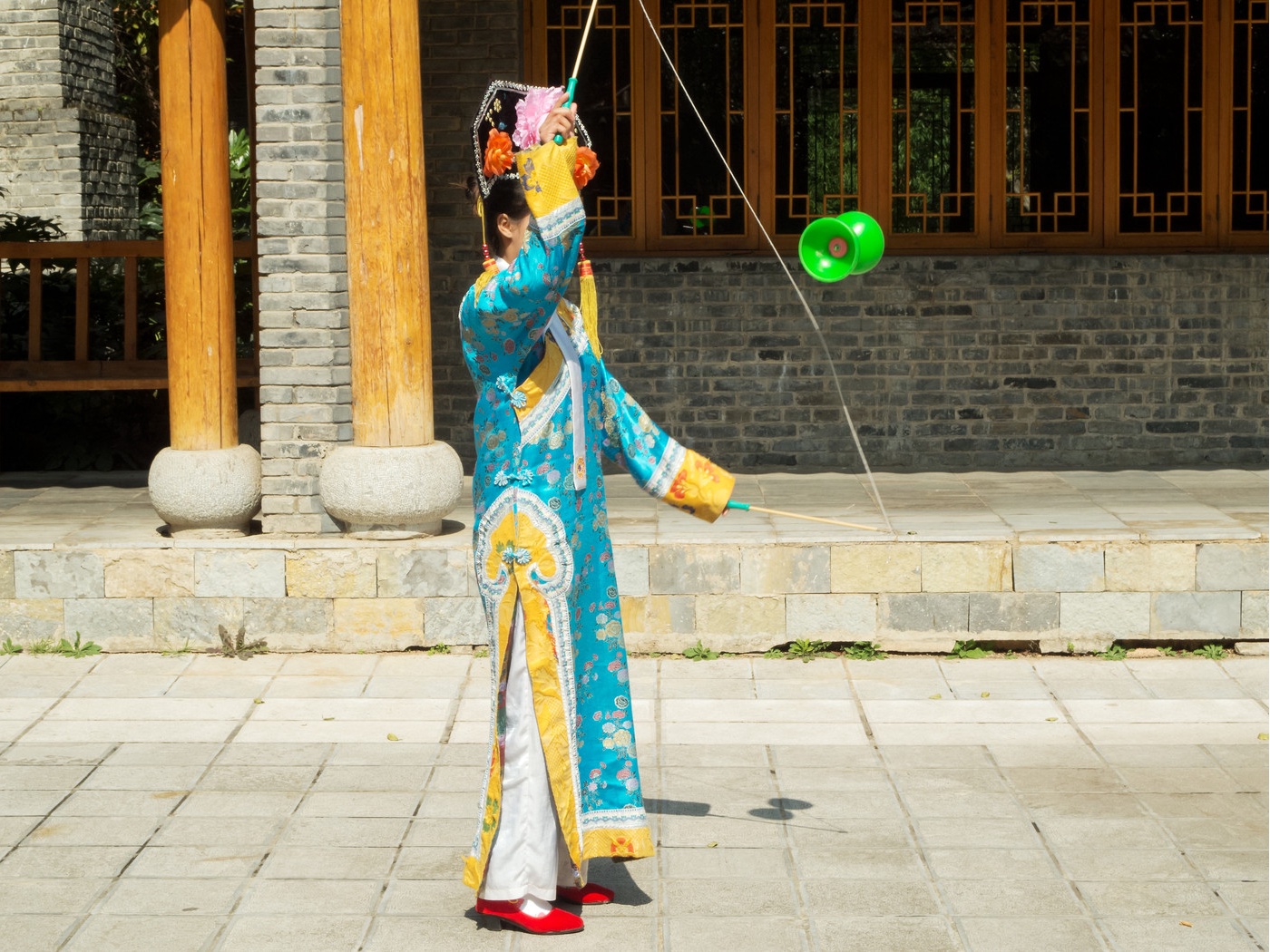Beijing Diabolo Museum was first opened in May 2009, and was the first "intangible cultural heritage" themed museum to be sited inside a Beijing community.
A Diabolo – or Chinese yoyo, is traditionally made of bamboo and wood. It is an empty roller, shaped like a dumbbell, which is spun and tossed on a string tied to two sticks, one held in each hand. They come in a variety of sizes – from the length of a finger nail to the width of a car tire, and in shapes such as dragons, balls, and flowers.

Anyone who has ever gone to a modern Chinese acrobatic performance will definitely have seen displays of dexterity when the acrobats strut their stuff with these infernal devices. The diabolo was officially added to acrobatic performances in China as far back as 1950. As the diabolos are spun, they make a unique whistling or buzzing sound, which is said to symbolize the awakening of spring.
The Diabolo Museum houses over 400 diabolos and is divided into three halls, presenting the development of diabolos in terms of their history, techniques, and playing tricks. Some notable exhibits include diabolos that are over 100 years old, the largest diabolo in the world, mini diabolos, and a diabolo once spun by Puyi – the last emperor of China, and clay sculptures of diabolo spinning in ancient times. There are also plenty of old photographs showing them being sold on the streets in days of yesteryear; and lest you have any worry about what you can do with one of these "toys," there are diagrams to help you out as well.
Here you will find cases full of diabolos, some pretty and others not-so-pretty. As there are no notices in English, it is worth taking your cellphone with an instant camera-translation app already loaded.
Traditional diabolos are hand-made, and the complicated process goes through about 17 procedures, including cutting the bamboo, making the body, polishing the wood, and adding an axle; but the tools used are pretty basic wood-working tools, as well as a small lathe and a worktable.
Also on display is a collection of the sticks used to control the diabolos. Initially, both the spools and the sticks of the Chinese diabolo were made of bamboo, but now they come in a variety of materials such as plastic, wood, and rubber.
According to the experts, there are now about 1,000 ways of playing with one of these devices. Not only can you create difficult tricks with them, but in circuses they are also combined with elegant dancing, while the performers kick shuttlecocks, ride bikes, roller-skate, or take part in many other activities at the same time.
As an art form, it's no surprise that the performers' costumes are just as important as the overall act, and sure enough this museum displays some of the costumes worn in famous performances.
There are still hundreds of diabolo organizations across China. In Beijing alone, it is said that at least 10,000 people play with them; and some 30 schools in the capital now list diabolo playing as one of their courses!
To get to the Diabolo museum, board Line 7 to Guang'anmennei and take exit B. Ahead of you is Baoguosi with Guangning Park on your left. Walk ahead 50 meters and turn left into Xiaoxing Hutong. After about 200 meters you pass a public toilet on your left and the museum is just after that on your right.



